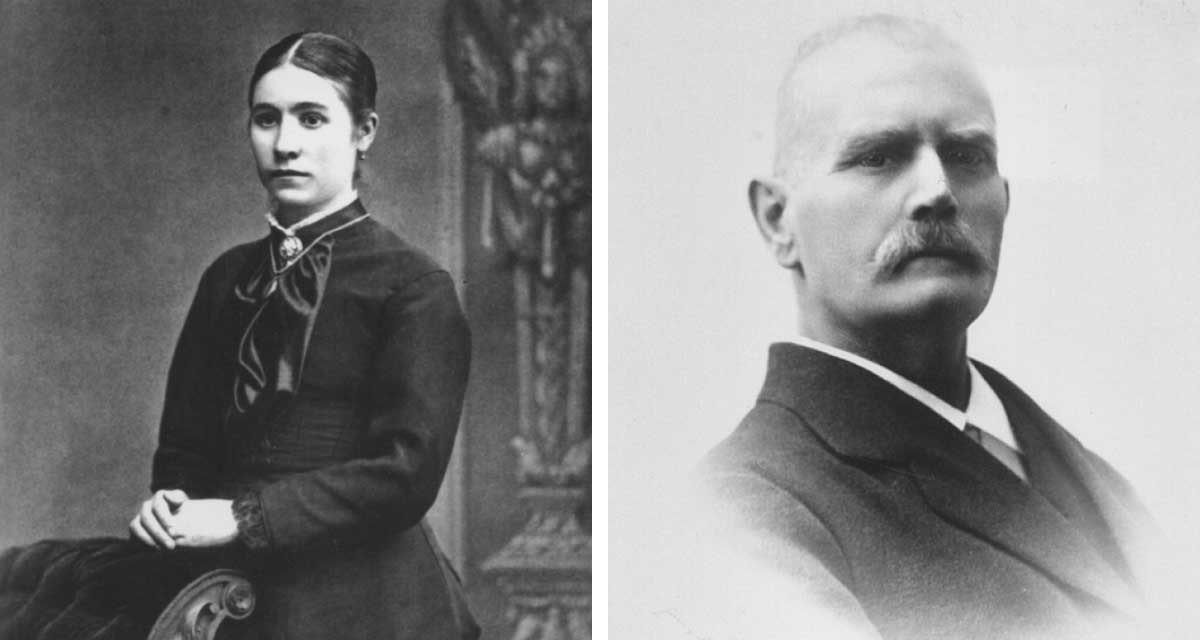Oline Hansen’s education was typical for a girl in mid-nineteenthcentury Fredericia, Denmark: in addition to academic subjects, she was taught “women’s skills”—sewing, mending, embroidery, knitting, and crocheting. By the time she reached marriageable age, Oline had filled a hope chest with enough handmade linens to furnish a proper household for Karl Madsen, the young customs official who wooed her and eventually won her heart. As her engagement gift to him, Oline cross-stitched a pair of suspenders that Karl then mounted on leather. They married in the late 1800s.

Left: Photograph of Oline Hansen Madsen. Fredericia, Denmark. Photographer unknown. Date unknown. Photographs courtesy of Else Lamba. Right: Photograph of Karl Madsen. Fredericia, Denmark. Photographer unknown. Date unknown.
Today, more than 100 years later, the colors of the repeat design of leaves worked in sixteen different shades of tapestry wool on 10-mesh Penelope canvas are still rich. The suspenders are lined with butter-soft calfskin; tiny hand stitches attach an edging of round braid. Each strip is finished at one end with a single loop of sturdy leather intended to be secured over a button sewn inside punched with five pairs of holes to allow adjustment of the suspenders to accommodate changes in the wearer’s height and girth.
The original design may have been a Berlin-work pattern; worked from color-printed graphs in cross- or tent stitch, Berlin work was a popular form of needlework beginning in the mid-nineteenth century (see “Berlin Work,” PieceWork, March/April 1995). The botanical subject matter and choice of cross-stitch support this supposition; earlier Berlin work tended to have light backgrounds, and so the dark background of this example places it in the latter part of the nineteenth century, the time Oline and Karl were married.
Judging from obvious repairs and missing leather bits, Karl Madsen wore these beautiful suspenders often and for many years. After his death, they were passed along to the couple’s younger daughter, Valborg Sara Simonie Brusch. Her only daughter, Else Lamba, who moved from Denmark and eventually settled in Parkersburg, West Virginia, with her husband in 1965, cherishes them now. Else plans to give them to her daughter, Leah Anjani Lamba, who, like Else, Else’s beloved Mor (mother in Danish), and her Bedstemor (grandmother; literally, best mother), is proficient in many types of needlework.
Further Reading
Berman, Pat. “Berlin Work.” Needlepointers, October 2000.
Mary Polityka Bush writes about, designs, and teaches embroidery in California. She thanks Else Lamba for lending her grandfather’s suspenders and sharing her memories for this story.

